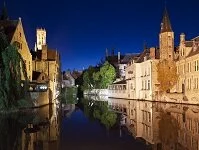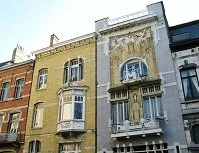
Bruges
The next significant architectural influence in the country arrived in the late 1800s as the Industrial Revolution swept in and brought with it new materials and building techniques. Steel and glass buildings became common, such as the Laeken greenhouses in Brussels (late 1800s) and soon these new building techniques were integrated into buildings with various facades, particularly with the advent of Art Nouveau.

Art Nouveau in Brussels
Belgium was a leader in the Art Nouveau movement, which began right about 1900. The Hotel Tassel, Hotel Solvay, Hotel van Eetvelde, and Maison & Atelier Horta (all late 1800s) located in Brussels were a few of the first Art Nouveau buildings ever built. A few years later the Stoclet House in Brussels was built, renowned as one of the world's best examples of Art Nouveau.
Brussels and Antwerp are perhaps the best example of the architectural changes over the course of Belgium's history, but for a more unique look into local architecture, keep an eye open for the Belfries spread throughout the country. These buildings, built between the 1000s and 1600s cover nearly every form of architecture from Romanesque to Rococo. Nearly every town and city in Belgium has a belfry, which over time became one of the most significant symbols of each city and together create an incredible architectural history of the country.